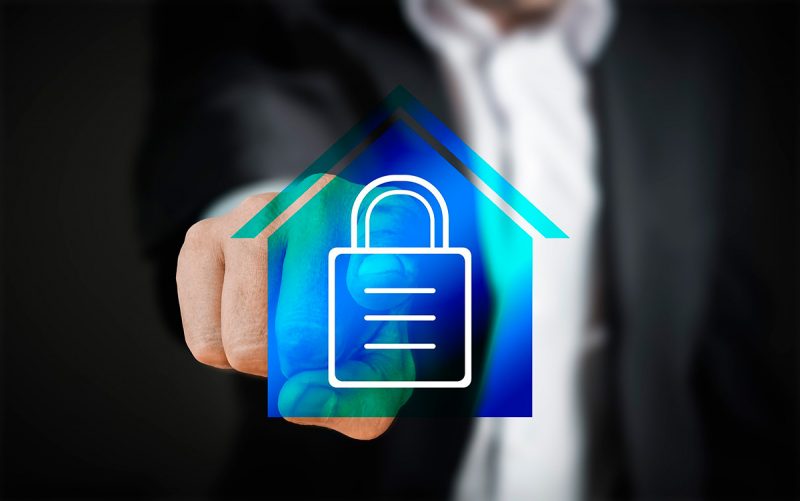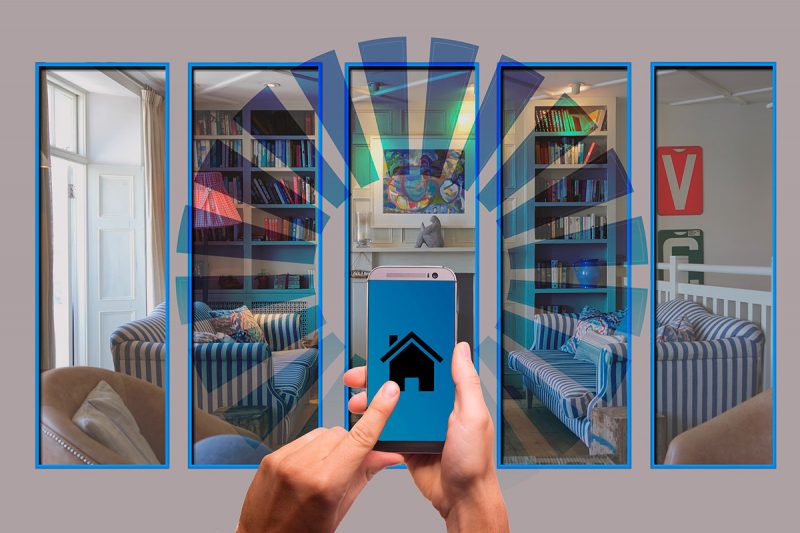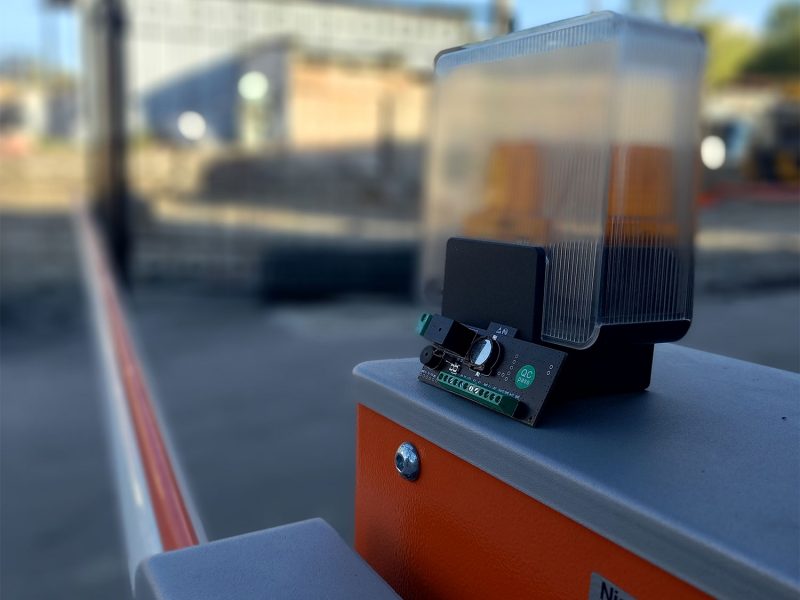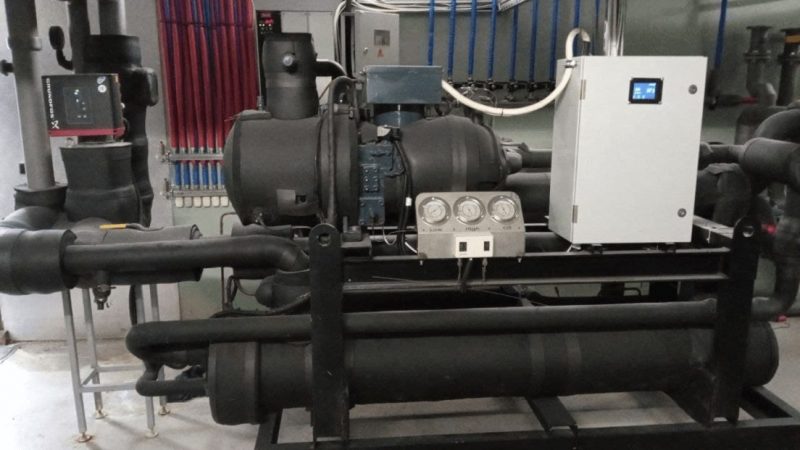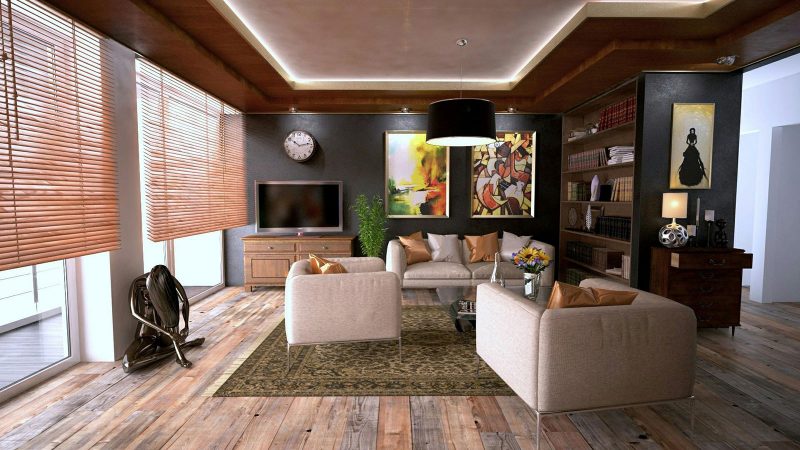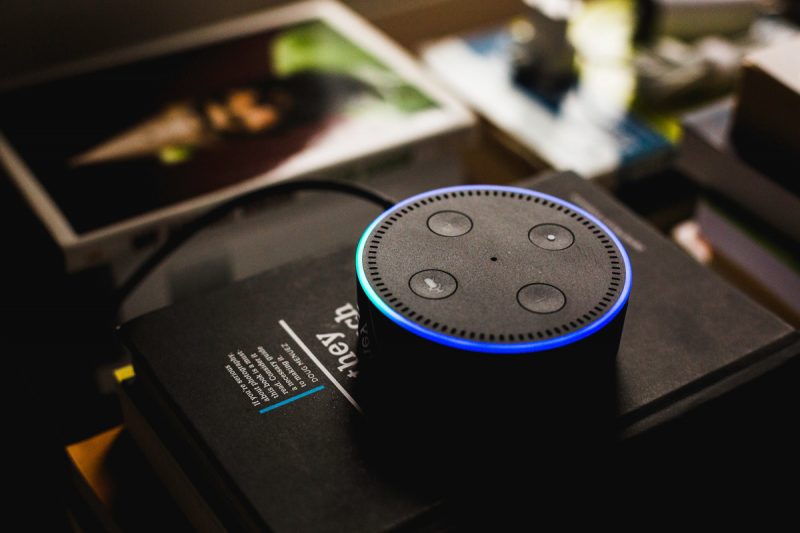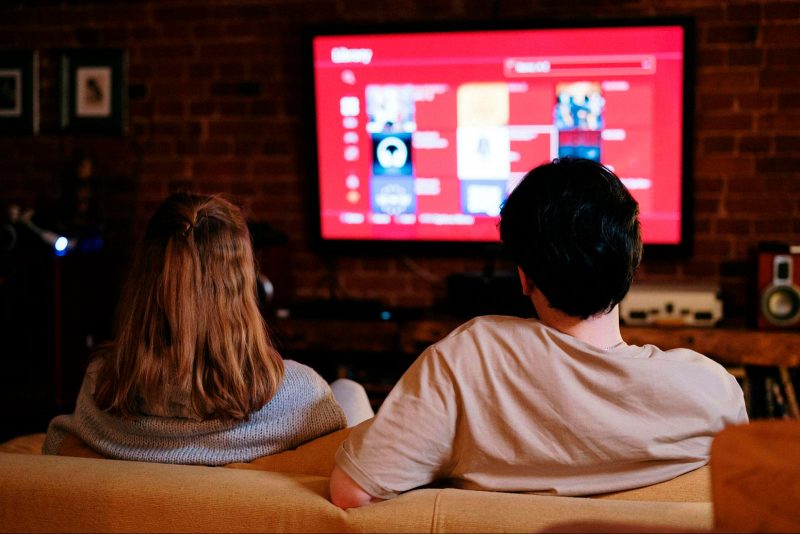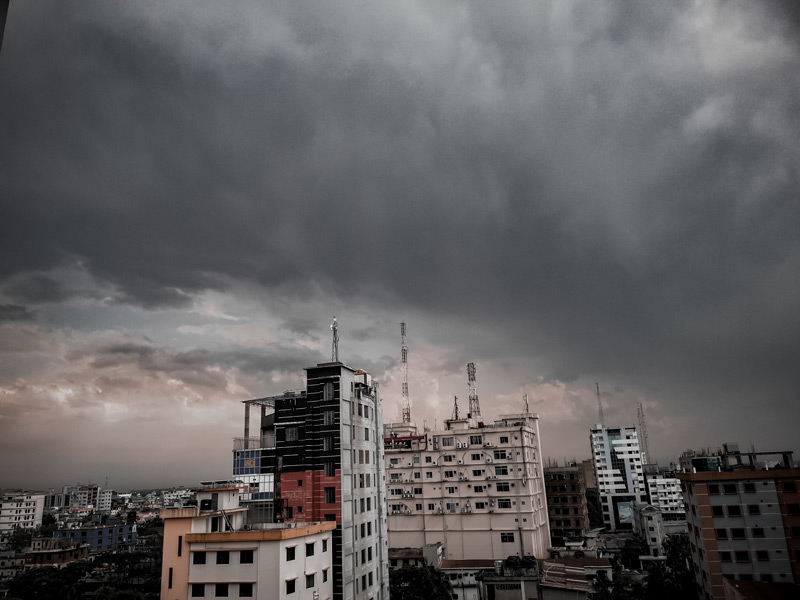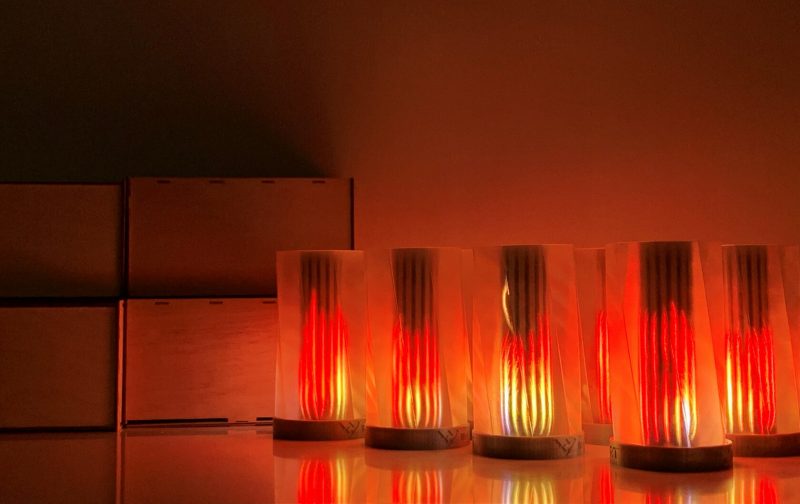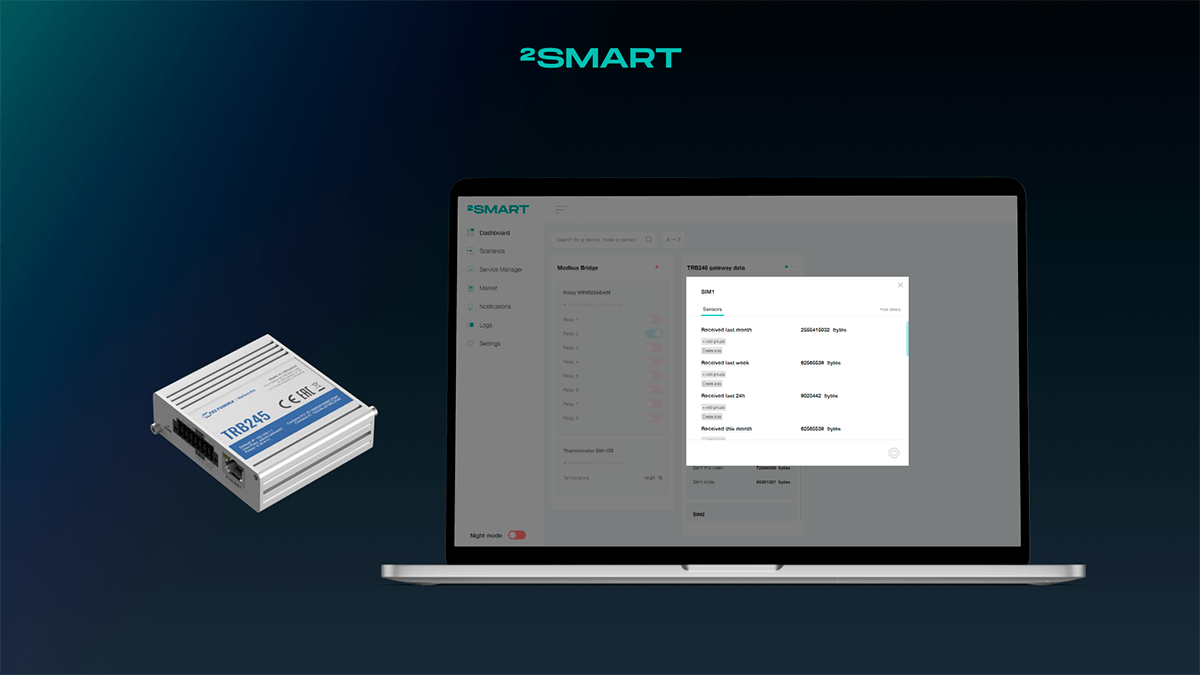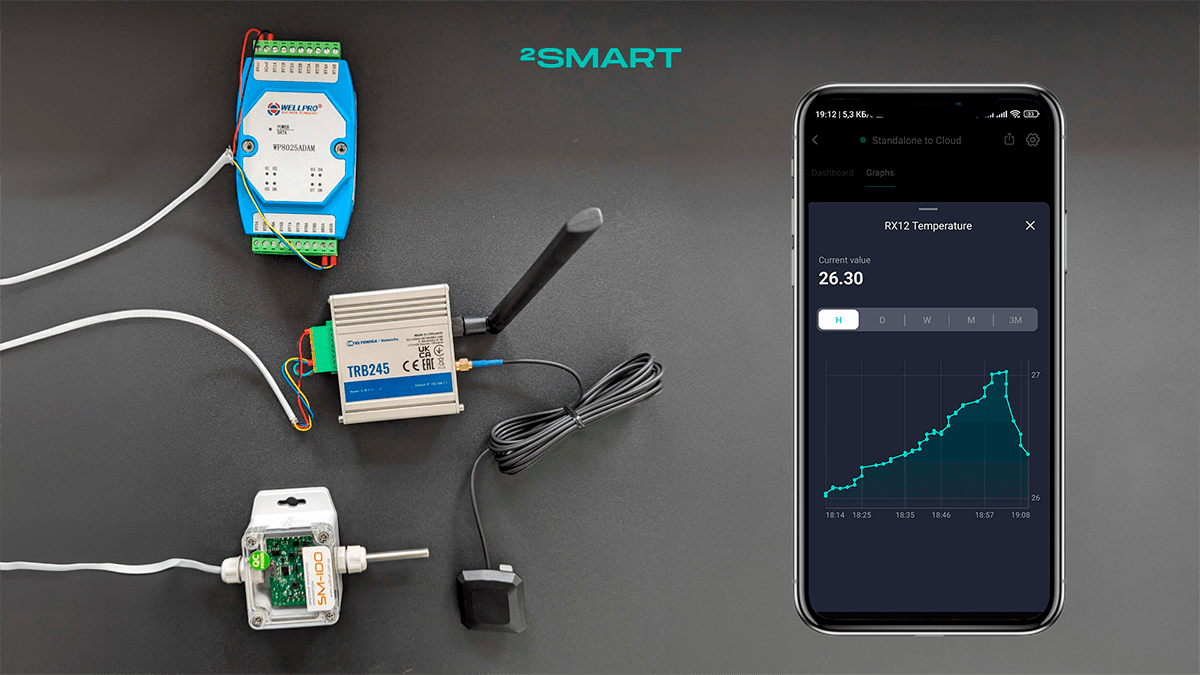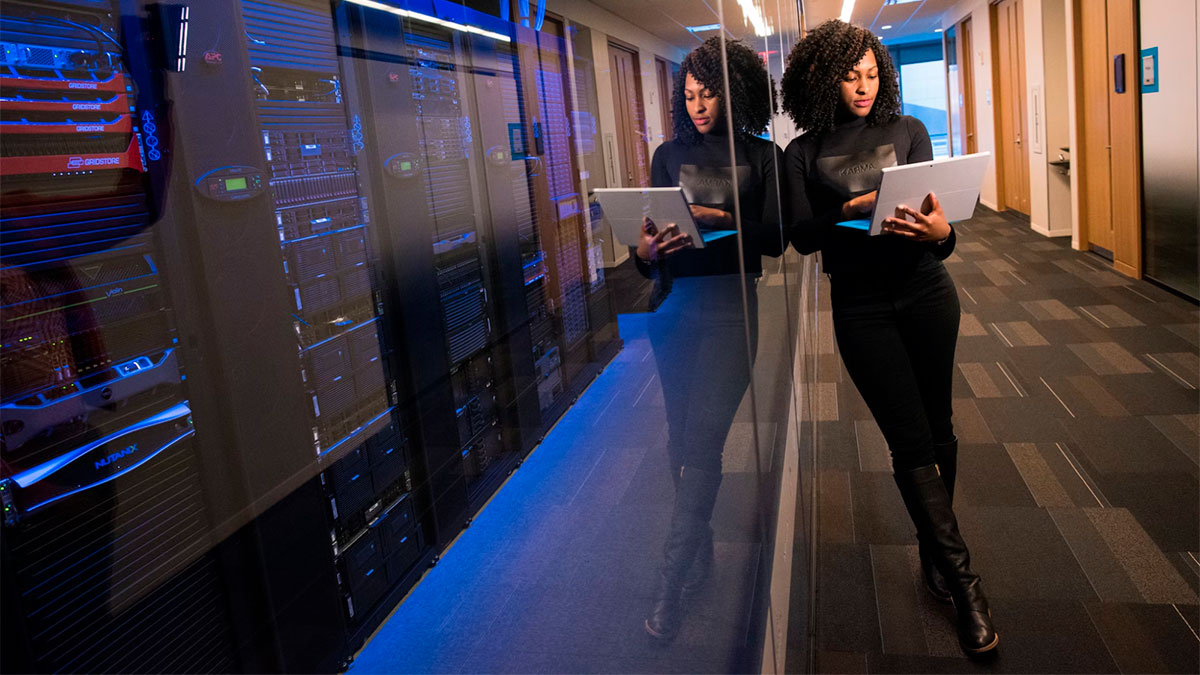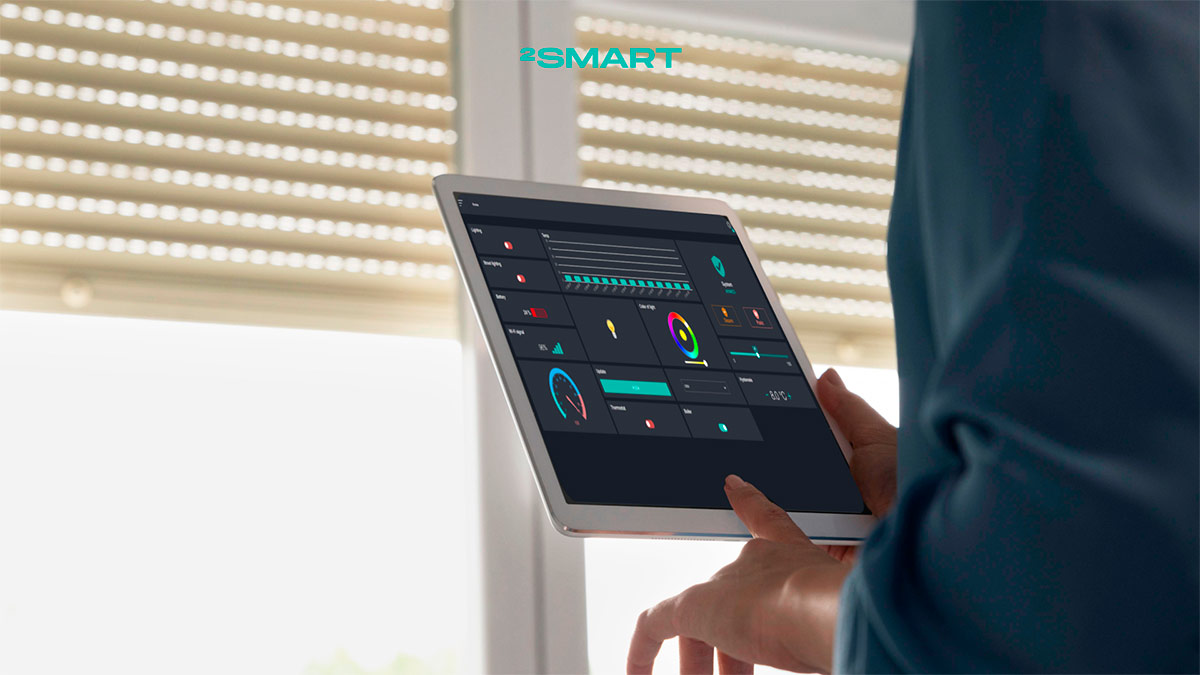Table of contents:
Internet of Things (IoT) devices are computerized devices that provide automation, connectivity, and interoperability in smart infrastructures. IoT smart home devices are quickly gaining in popularity along with the advancement of modern-day architecture. Lots of people are well-familiar with such solutions, and the number of IoT-connected devices worldwide is expected to reach as much as 29 billion by 2030.
The range of IoT devices in the home extends beyond typical consumer electronics like mobile phones or laptops. They cover a large specter of usable solutions, which can perfectly complement smart home infrastructure in case you intend to build one.
Have a smart home project in mind? Drop 2Smart a line to let our specialists handle any development and automation work.
Using Internet of Things Devices for Home Automation
As smart homes continue to surge in popularity, IoT-based solutions are garnering significant acclaim. This is driven by the necessity to fulfill the requirements of automated infrastructures and enhance their capabilities. Indeed, investing in a smart home system with a remote controller marks merely the initial step on this transformative journey.
Between 2023 and 2028, the revenue in the United States smart home market is projected to rise steadily by a total of $20.4 billion (+58.84%), reaching a new peak of $55.03 billion in 2028 after nine consecutive years of growth. This growth aligns with an increasing adoption of IoT devices within smart homes during the same period.
Let’s collaborate
We’re empower your business with our technology expertise
Problems That Can be Solved Using IoT Devices for Smart Homes
Let’s proceed with a quick summarization of problematic issues that the integration of IoT solutions effectively resolves:
Security Issues
The safety of your property is pretty much the aspect lots of people care for. Depending on the region you live in, you may need a regular or an advanced security system. Regardless of your purposes, smart solutions may be an excellent intermediary between you, smart infrastructure, and the security service provider.
Lack of Automation
If automated, handless control over the entire home and electronics hosted in it is what you are striving for, you must go with IoT solutions. They help to achieve the maximally possible level of automation, which may be essential for ones who deem convenience their top priority.
Elderly Assistance
Surprisingly, smart devices may help to take good care of older people. From solutions for microclimate control to smart curtains, IoT electronics are what simplify, probably, every aspect of looking out for the elderly and improving their patient experience and life satisfaction.
Lack of Interoperability
It’s frequent that some devices don’t click well with other electronics. With IoT units chosen and integrated properly, you would never experience difficulty operating your TV through voice assistant or unlocking the door through a mobile app.
9 Examples of IoT Devices for Smart Homes
Tap into the potential of IoT to deploy a variety of automation protocols, upgrading your home to a sophisticated smart environment. Enhance convenience and simplify your everyday life with the Internet of Things home automation concepts. Let’s explore several examples showcasing the wide array of IoT technologies designed for smart homes.
Door Locks and Motion Sensors
Crimes such as burglary and theft are not unheard of. It makes smart door locks and motion sensors to be one of the most popular IoT smart home device examples. Locks enable you to lock and unlock the home from anywhere via a smartphone app. You may also use voice assistants to effortlessly manage the smart lock.
As for motion sensors, they are the best for triggering smart alerts when someone is attempting to enter the home. They also help to manage such aspects as ventilation or lighting. These easily may be set in the way they would turn on when you enter a room and turn off when you exit it.
Here are some of the benefits that door locks and motion sensors bring to smart homes:
- Greatly add to the overall home security.
- Perfectly integrate with third-party security services.
- Easy to manage compared to conventional systems.
Door locks and motion sensors can address, probably, each of the mentioned problems in a way. Businesses that see security solutions as their primary niche definitely should be first in line for smart door locks and motion sensors software development and integration.
Learn about the 2Smart team’s experience in developing access control solutions in the following case: Access control and management system Propuskator: a complete IoT solution
Smart Kitchen Appliances
Smart kitchen appliances are reshaping home automation, fundamentally changing how we engage with our kitchens. These innovations are not just gadgets; they represent a paradigm shift in culinary technology. Let’s delve into a few key advancements propelling this revolution:
- Refrigerators with Built-in Cameras: Imagine effortlessly checking your fridge’s contents while grocery shopping or receiving alerts when essentials are running low. Smart fridges equipped with cameras offer this convenience, allowing remote viewing via smartphone apps. This feature not only minimizes food waste but also streamlines shopping trips.
- Smart Ovens with Remote Control: Bid farewell to oven-related worries with smart ovens that enable remote monitoring and control via smartphones. Adjusting settings, setting timers, or receiving notifications when meals are ready is now seamless, offering unparalleled flexibility and peace of mind.
- Voice Control Integration: With voice-enabled commands, multitasking in the kitchen becomes effortless. Smart appliances, like smart coffee machines, now feature voice-enabled commands, allowing hands-free control. From adjusting settings for brewing coffee in advance to preheating your food or managing shopping lists, voice control enhances efficiency and convenience in the kitchen.
Smart kitchen appliances redefine cooking and food management, offering unmatched convenience, efficiency, and control. As technology advances, we anticipate further innovations that will continue to enhance the kitchen experience and redefine modern living.
Smart Heating Solutions
Smart heaters are interactive solutions that receive information to and from users and integrated smart home controllers. They allow for adjusting the heating of the building automatically or manually through the remote controller. This way, you may easily control how your home is heated, so now excessive energy is wasted, but the temperature is already comfortable by the time you arrive.
Smart heaters may also control what type of power-to-heat unit is in use at a specific moment of time. For example, a hybrid heat pump may be used when the electricity is affordable to use, and switching to the integrated boiler when it becomes too expensive.
Here are some of the benefits that smart heating solutions bring to smart homes:
- Increase efficiency and generate energy savings.
- Helps to integrate renewable electricity from the grid.
- Can easily be adapted to customers’ needs.
- Combinable with modern heating technologies.
Self-sustainable homes having sources of renewable electricity integrated are another breed. They are even more complex, and that’s why they require smart heaters in the first place to manage the accumulation and distribution of energy.
The elderly find heating solutions convenient and easy to use. Suppliers of heaters of the new generation should also pay close attention to this IoT category.
Learn about the 2Smart team’s experience in the development of IoT smart heating solutions in the following case: Neat and cost-effective heat pumps modification
Smart Gardening Solutions
Many completely forget that in the era of increasing connectivity, some electronics may be placed outside the house, serving less advanced purposes. Remote-controlled sprinkler systems and robot-enabled lawnmowers are some gardening-focused Internet of Things examples in smart homes.
The interesting thing about smart gardening solutions is that they can automatically increase or decrease water supply depending on the data for weather patterns collected. This feature helps to control water wastage and humidity of soil much better.
Here are some of the benefits that smart gardening solutions bring to smart homes:
- Better water wastage management.
- Enhanced control over soil humidity.
- Easy-to-use remote control.
Gardening solutions like the smart greenhouse based on an open-source home automation platform are not for everyone, but if you are fond of growing plants, you may take full advantage of such a specialized IoT. Elderly people are known for their love of gardening, so they reap most of the benefits of such IoT. Lack of automation and lack of interoperability are also addressed with the gardening solutions, which may come in handy to all the businesses involved with growing anything.
Learn about the 2Smart team’s experience in developing IoT greenhouse automation solutions.
Let’s collaborate
We’re empower your business with our technology expertise
Smart Blinds and Shades
In the realm of home automation, smart blinds and shades shine as simple yet essential solutions, delivering unparalleled control over natural light and privacy settings. Their seamless integration with other smart home devices centralizes control and automation, enhancing convenience and efficiency throughout the home. Let’s explore the benefits and features that define these innovative additions to modern living:
- Remote Operation: they can be effortlessly adjusted from anywhere using your smartphone or voice commands. This convenient feature enables easy management of your home environment whether you’re indoors or out.
- Automated Adjustment: you could program them to adapt automatically based on various factors such as time of day or sunlight intensity. By optimizing lighting conditions and reducing reliance on artificial lighting, they significantly boost energy efficiency, ultimately leading to savings on utility bills.
- Enhanced Privacy: smart blinds and shades will help you reach the perfect balance between privacy and natural light by providing precise control over visibility. This allows you to create a cozy ambiance while safeguarding your home from prying eyes.
In summary, Smart Blinds and Shades epitomize convenience, energy efficiency, and sophistication for modern homes. With their remote operation and automated adjustment capabilities, they offer a seamless solution for managing natural light and privacy settings.
Personal Assistants
Probably one of the most vivid examples of internet of things devices used in smart homes are personal assistants. They are becoming increasingly common in the niche due to their convenience of use. For one, Amazon’s personal assistant Alexa is what you may frequently see in smart home infrastructures. Potentially, you may set up your home in the way it would be fully operated by a personal assistant like Alexa.
Here are some of the benefits that personal assistants bring to smart homes:
- Minimize the need for manual operations.
- Streamline the management of IoT devices.
- Contribute to the complete automation of the smart home infrastructure.
- Inform in a non-obtrusive way.
You still may operate your home in an old-fashioned way — with the help of one or another remote controller. But the usefulness of personal assistants is something that’s hard to argue against.
This technology is particularly loved by ones striving for complete smart home automation and superior interoperability between all the devices in use. There are a number of personal assistants exiting already, but who knows, probably your one will become a game changer.
Smart Entertainment Systems
Smart entertainment systems redefine how you enjoy leisure time, offering an unparalleled blend of convenience and immersion. Leveraging AI and machine learning, they analyze your viewing habits to curate personalized content suggestions, ensuring there’s always something tailored to your preferences. You could Seamlessly integrate them with other smart home devices enabling customized routines and scenarios. Imagine dimming the lights, adjusting the thermostat, and initiating a movie night with a single voice command.
Let’s explore some examples of smart entertainment devices and their standout features:
- Smart TVs offer internet connectivity and pre-installed apps for direct streaming from Netflix, Hulu, and Amazon Prime Video. With 4K resolution and HDR support, they provide immersive viewing.
- Smart Speakers, powered by virtual assistants like Amazon Alexa, control your setup seamlessly. Built-in microphones and advanced voice recognition respond from anywhere in the room, managing music and devices.
- Streaming Devices like Roku extend smart entertainment to non-smart TVs, accessing various services and content libraries via HDMI and Wi-Fi.
Overall, smart entertainment devises enhance your home entertainment setup with their seamless integration, intuitive voice control, and personalized content recommendations, offering a superior experience whether you’re watching movies, listening to music, or gaming.
Environmental Conditions and Energy Wastage Controllers
Temperature, relative humidity, and air pressure controllers are what often work in pairs with heating solutions. They may be installed throughout the smart home or in certain rooms only to create a comfortable and well-controllable microenvironment.
By adjusting means of natural and mechanical ventilation, ultraviolet irradiation, and filtration, controllers automatically keep the environmental conditions and air quality within the set limits. In their turn, energy controllers help to lower network losses by adjusting the lighting, air conditioning, cooling and heating of water, and more.
Here are some of the benefits that environmental conditions and energy wastage controllers bring to smart homes:
- Minimization of electricity and water expenses.
- Reduction of carbon emissions.
- Creation of an optimal microclimate as per set parameters and patterns.
- Provision of detailed reports regarding energy consumption,
Environmental conditions controller together with energy wastage systems allows for creating an economical yet effective system.
Both elderly and progressive youth of the planet find such solutions totally usable. At the same time, businesses may feature profitable collaborations with companies in adjacent spheres.
Smart Consumer Electronics
This category covers a vast array of solutions with device-to-cloud development and integration. These IoT devices examples in smart homes include VR headsets and projectors, data-tracking wearables, smart cleaning bots, scanners and printers, digital cameras, and more. Such devices can easily complement your smart home functionality with additional capabilities.
Here are some of the benefits that smart consumer electronics bring to smart homes:
- Serve as usable extensions to already existing infrastructure.
- Comes in various types and forms.
- As a rule, they have excellent interoperability.
- Serves for everyday use.
It’s hard to argue that anyone may pick smart tech that would fit their needs the most since the array of such electronics is extensive. Most likely, you are already an owner of one or another consumer IoT. Yet, you may always improve your smart home infrastructure with additional solutions.
The only limitation of the category is that, probably, it’s the most developed niche with a number of well-established competitors.
Learn about the 2Smart team’s experience in the development of smart consumer electronics in the following case: IoT smart lighting on the example of creating a WOW Fire Lamp
2Smart Standalone Home Automation System for Your Smart Home
As demonstrated by the examples provided, the IoT smart home has emerged as a flourishing trend, attracting a growing number of individuals aiming to enrich their lifestyles with innovative technology. If you’re also exploring ways to integrate diverse IoT products into your daily routine and manage every facet of your household, from entertainment to security maintenance, we encourage you to explore the 2Smart Standalone platform for smart home automation.
2Smart Standalone is a user-friendly IoT automation solution, simplifying device connectivity and home control setup for non-technical users while accommodating diverse automation scenarios and limitless expansion. It supports devices from different vendors, like KNX, Zigbee, and Modbus, with the potential to expand compatibility even more.
A standout feature of 2Smart Standalone lies in its intuitive interface, which allows users to personalize dashboards with connected smart devices according to their specific needs.
Furthermore, end-users can integrate their Standalone devices with the 2Smart Cloud solution without any additional costs. Through the cloud mobile application, users gain the flexibility to manage their devices from any location with internet access. In addition to remote control functionalities and device monitoring, users of the 2Smart Cloud platform can enjoy enhanced user experience features such as managing their devices with the help of voice control, direct phone calls, Telegram bot, and numerous IFTTT automations. Moreover, the 2Smart Cloud mobile app allows device sharing among users and enables direct notifications to personal, family, or corporate chats in WhatsApp, Slack, and Telegram.
You can explore a detailed description of a successful Standalone platform implementation in the smart home building case study given in this article.
Lastly, it’s worth noting that this platform has transitioned to open-source status, granting everyone the freedom to acquire and install it for their personal use at no cost.
Consider 2Smart Your Trusted Partner
2Smart is an Internet of Things platform for smart creators. We have been on the market since the wide spread of IoT technologies, delivering them to small startups to large-scale businesses.
We work smart to offer you some of the best IoT solutions for your project. Drop us a line, claim your free strategy session, and get your idea brought to life.
Curious what are our main services lines? Here you go:
- Ready-to-use solutions. A cloud-based IoT platform tailored for device developers, offering a user-friendly mobile app builder with no-code requirements and simplified low-code programming capabilities. Easily manage your devices using the pre-built 2Smart Cloud mobile application.
- Custom development services. Select from a range of tailored solutions, including white-label platform and mobile app development, custom integration services, creation of private cloud, bespoke firmware development, and a comprehensive business platform designed for enterprises. The platform offers powerful features for managing devices, companies, users, and their roles within the system.
We also offer business consulting and support, technical maintenance of your existing solutions, and additional service lines.
Have something in mind that is not listed? Contact us, and we will make it work!
Final Thoughts
Examples of using IoT devices in smart homes clearly show how well-established this industry really is, and there is still more. Smart solutions for home automation include such technologies as security and climate control solutions, personal assistants, waste management technologies, and even smart consumer electronics that fall within this category.
It’s frequently that small startups, large businesses, and even individual smart homeowners require software development or IoT integration. That’s why choosing a reliable vendor for your needs is quite an important decision to make. Share your project details with 2Smart and get an expert team to address your business goals.
FAQ
- What are the most usable IoT smart home examples?
Personal assistants and climate monitoring systems are considered the core of smart home functioning, excluding the very controllers of a technological home and cloud services.
- Do I actually need smart home IoT devices?
If you are a smart homeowner, you already use some forms of IoT technologies, but your infrastructure may significantly increase in its functionality if you consider adding complementary electronics.
- Does a smart property come with Internet of Things smart home devices included?
Typically, smart homes have integrated automation solutions, along with capabilities to connect additional IoT devices and manage them using remote controllers and voice assistants.
Don't forget to share this post!
Read Next
Let’s dive into your case
Share with us your business idea and expectations about the software or additional services.

